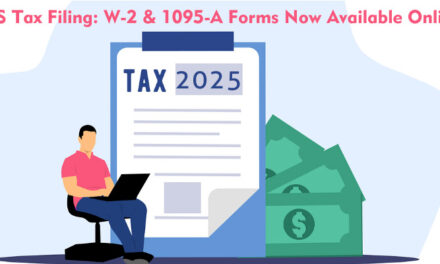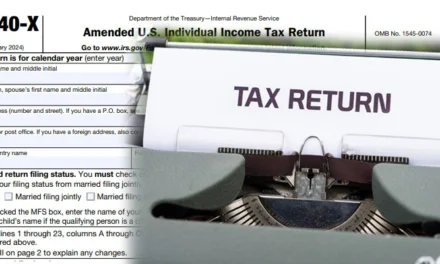Understanding your tax transcript is essential for verifying profits, adjusting tax filings, and resolving troubles with the IRS. Whether you’re an character taxpayer or a commercial enterprise owner, knowing how to interpret your transcript may be priceless, specifically if you’re eager to see the direct deposit of your tax refund. Here’s a manual on a way to make feel of your tax information and track your refund.
Steps to Find Your Refund Date
- Review the Return Transcript Section: This section provides details on your filed tax return and any refund amount.
- Locate “Refund Issued” or “Refund Date”: This line item will show the exact date your refund was issued.
- Ceck for Additional Tax Payments or Credits: Ensure there are no additional payments or credit balances that might affect your refund status.
By following these steps, you can easily locate your refund date and stay updated on the status of your refund.
Key Information on Your Tax Transcript
When you review your tax transcript, you’ll find key information such as your Social Security or taxpayer identification number, the type of original tax return filed, taxable income, tax credits and deductions claimed, and the amount of tax owed or refund. For business owners, additional details include the business name and address, marital status, and income sources.
Depending on the type of transcript, you may see more specific details. Here are the different types of transcripts you might encounter:
- Tax Return Transcript: Shows most line items from your original tax return.
- Tax Account Transcript: Provides basic information such as return type, marital status, AGI, and taxable income.
- Record of Account Transcript: Combines the information from the tax return and tax account transcripts.
- Wage and Income Transcript: Displays data from W-2s, 1099s, and other income documents.
- Verification of Non-Filing Letter: Confirms that the IRS has no record of a filed tax return for a specific year.
Common Transcript Codes and Their Meanings
You may encounter various transaction codes on your tax transcript. Here are some of the most common:
- Code 150: Indicates your original return has been filed.
- Code 806: Signifies that your refund is being processed.
- Code 846: Means your refund has been issued.
- Codes 766 and 768: Denote additional taxes owed or a refund offset.
Understanding these codes is essential for grasping the status and history of your tax transcript. For instance, if you see Code 150, it confirms that your original return has been successfully filed. Code 846 implies that your refund has been issued. Codes 766 and 768 indicate additional taxes owed or that a portion of your refund has been offset.
Tracking Your Refund with Your Transcript
To track your refund using your tax transcript, follow these steps:
- Access Your Tax Transcript: You can do this through the IRS website.
- Look for Key Sections: Check the “Adjusted Gross Income” and “Refund Amount” sections to determine your refund status.
- Check for Delay Codes: Look for any delay codes that might indicate potential issues causing a refund delay.
Additionally, use the “Where’s My Refund?” tool on the IRS website. Cross-reference any delay codes on your transcript with the information provided by this tool to understand the reasons for any refund delays. The IRS updates the tool once a day, usually overnight, so check back regularly for the most up-to-date information.
Understanding Your Transcript Cycle Code
The eight-digit cycle code on your tax transcript helps identify when your account was posted to the IRS Master File and whether your return is being processed. The IRS processes returns in either weekly or daily batch cycles.
To interpret your transcript cycle code, start by checking the tax topic code on your transcript. This code will indicate the specific issue related to your tax return. Additionally, the 846 code will show the status of your refund, whether it has been approved, processed, or if there are any delays.
Obtaining Your Tax Transcript
To obtain your tax transcript, you have three options:
- Online: Create an account on the IRS website, log in, and select “Get Transcript” to view and download your tax transcript immediately.
Phone: Call the IRS at 800-908-9946, provide your personal information, and request your transcript. It will arrive by mail in 5-10 days.
Mail: Complete and mail Form 4506-T to the IRS. This method takes about 30 business days to receive the transcript.
Why Business Owners Should Read Their Tax Transcript
As a business owner, reading your tax transcript ensures that you report your income accurately, helps avoid costly mistakes, and protects you from the possibility of fraud by identity by ensuring that your income, deductions, and credits are properly recorded by the IRS, you can avoid penalties and potential interest charges.
Reviewing your tax return can also help identify signs of identity theft. Comparing the information in your writing to your own record can help you spot discrepancies that could indicate fraud.
Additionally, it is important to understand IRS investigations. If the IRS has made any changes to your tax return, your tax return will provide you with information about these changes, allowing you to quickly address any issues. These first steps can help you plan for the future by understanding your tax history and making sound investment decisions for your business.
Finding Your Refund Date on Your Transcript
To find your refund date on your online transcript:
- Access Your IRS Account Online: Log in to your account and locate the option to view and download your tax transcript.
- Locate Refund Information: Look for a section labeled “Refund Date” or “Date Issued” to see when your refund is scheduled to be released.
If you have trouble locating the date or accessing your transcript, seek assistance from a tax advocate or contact the IRS for support. They can help you navigate the online system and find the information you need.
Conclusion:
By following these steps, you can easily see the refund date on your tax return and be notified when the refund is expected. Understanding your tax returns allows you to better meet your tax obligations. By familiarizing yourself with the terms, rules, and forms provided, you can ensure accurate tax returns, track refunds, and maintain a clear understanding of your tax history.






Trackbacks/Pingbacks